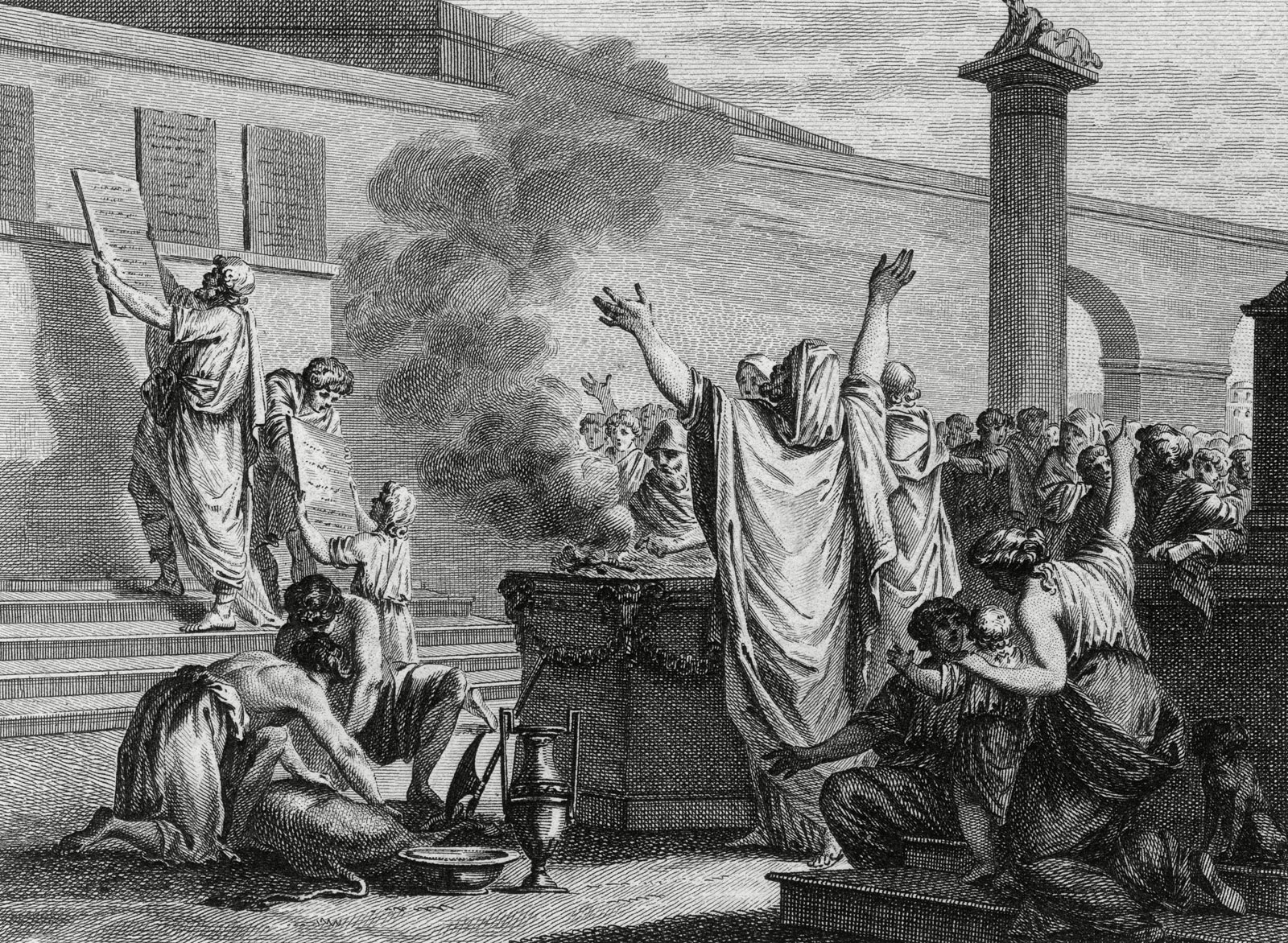The legal code published on the Twelve Tables in the fifth century B.C. reflected the needs of a small city-state, not those of a huge empire. As Rome became a world capital, thousands of foreigners flocked to live there, and of course they often got into disagreements with each other or with Romans. But Roman law developed the flexibility to adjust to changing conditions. The enactments of the Senate and assemblies, the decrees of each new emperor, and the decisions of the judges who were often called in as advisers— all contributed to a great body of legal materials.
It was the praetors (the chief legal officers) who heard both sides in every case and determined the facts before turning over the matter to the Ylex (a referee) for decision. Gradually, these officials developed a body of rules for deciding cases that were not covered by existing law. As they dealt with foreigners with different languages and customs, they worked out a body of common legal custom—the jus gentium (law of the peoples)—to be applied to all of them. Romans also gradually acquired the benefits of the jus gentium. As each new praetor took office for a year, he would announce the laws by which he intended to be bound, usually following his predecessors and adding to the body of law as necessary.
The expert advisers to both praetor and judex felt an almost religious concern for equity; it was the spirit rather than the letter of the law that counted. In practice, of course, judges were often poorly trained, the emperors brutal or arbitrary; Roman law could be used to exalt the authority of the state over the individual. Yet the law recognized the rights of the citizen, afforded legal redress even to slaves, and gave wide scope to local legal practices. The law of much of western Europe today goes back to its provisions.
Medicine, too, advanced. Roman surgeons made a variety of ingenious instruments for special operations, including the Caesarean operation for babies who could not be delivered normally. The Romans developed the first hospitals. However, much superstition survived in Roman medicine, and it was the Greeks, notably Galen (c. 129-199), who continued to make the major theoretical contributions.
What Galen did for medicine, a contemporary, Ptolemy of Alexandria (c. 85-161), did for geography. Both remained the chief authorities on their subjects as late as the seventeenth century. Some learned Romans followed the Alexandrian Eratosthenes in believing that the earth was round. Pliny the Elder (23-79) made observations of ships approaching the shore to support this hypothesis; it was the tip of the mast that appeared first to an observer on shore, and the hull last—a proof Pliny felt, that the surface of the earth was curved.

